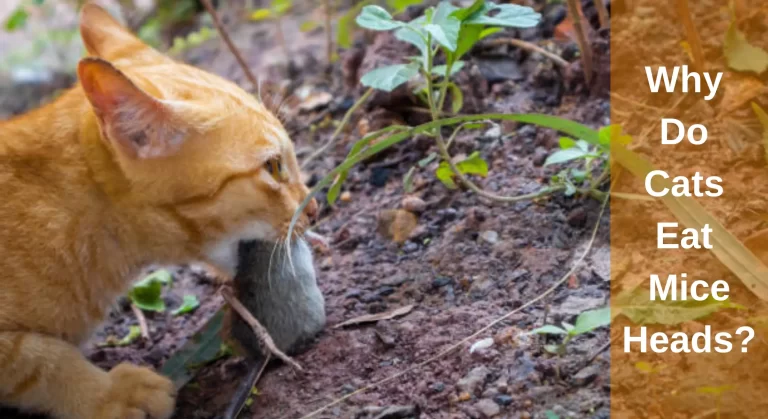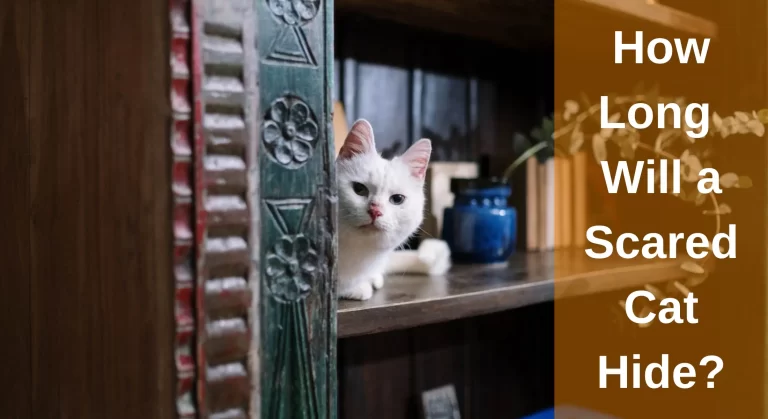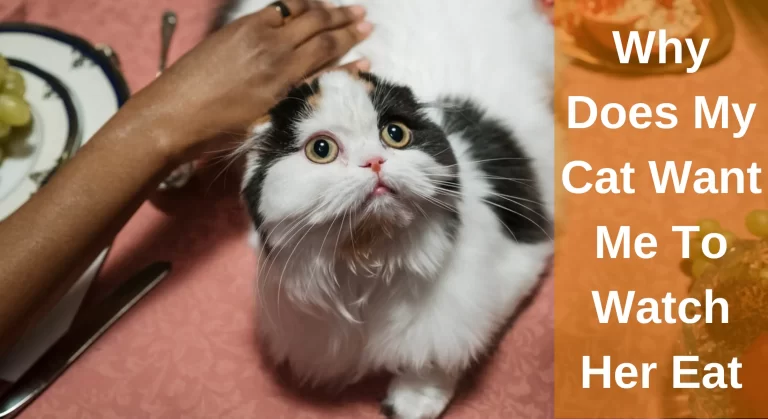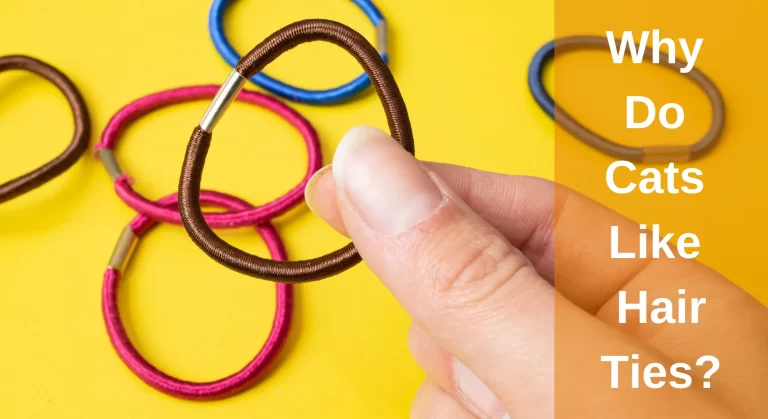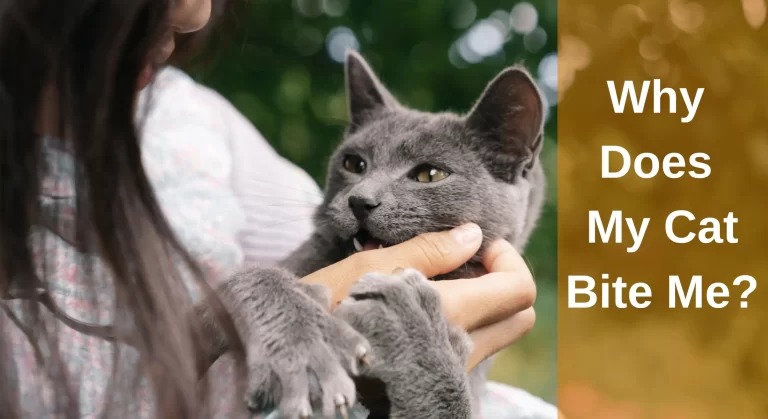Why Does My Cat Make Biscuits On Me? Why Do Cats Knead?
As a cat owner, you may have experienced your feline companion kneading on your lap or chest, using their paws to push in and out repeatedly as if they are making bread dough. This behaviour, known as “making biscuits,” can be adorable but also confusing.
When a cat kneads, it imitates the motion of a person making the dough by pushing its front paws up and down on a surface while moving between the left and right. But Why does my cat make biscuits on me?
Kneading is a natural and adorable behaviour that cats develop when they are young that serves various purposes, including their natural instincts, desire for attention, physical exercise, marking territory, and showing affection.
In this article, we will explore the science and meaning behind this feline behaviour, including the reasons behind the physical motion, and the emotional significance of kneading for cats.
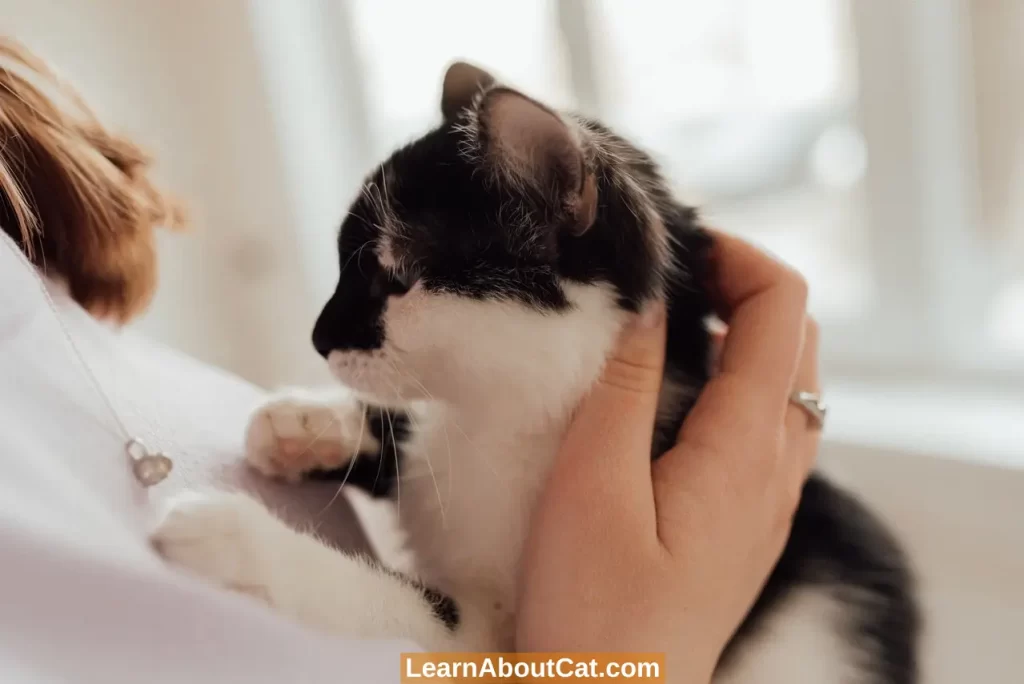
What is kneading?
Kneading, also known as “making biscuits,” is a rhythmic movement where a cat pushes and pulls its paws against a soft surface, such as a blanket or a human’s lap. The motion often resembles the kneading of the dough, hence the name and is often accompanied by purring and the flexing of their claws.
The Physical Process of Kneading
Kneading involves the contraction and relaxation of a cat’s front paw muscles, aided by the claws that are extended and retracted. The motion is similar to nursing kittens, where the paw movements stimulate milk flow.
In a relaxed state, a domestic cat may alternately push and drag its front paws outward and inward on a surface like a carpet or a furniture. After each stroke, the cat performs a clutching motion with its claws, as if it were kneading bread.
Reasons Why Does My Cat Make Biscuits On Me
Cats knead mostly because it’s in their genetic makeup. It helps in the release of milk from mammary glands when their kitties rub or massage their mother’s breasts with their paws. However, that is only one of the causes. The other possible causes are given below.
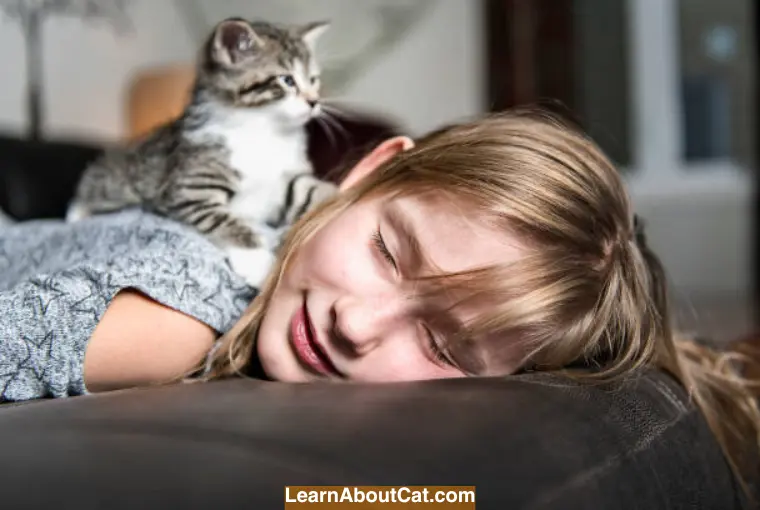
1. Cats Knead Out of Instinct
Kneading is a natural instinct for cats. Kittens instinctively knead their mother’s bellies to stimulate milk flow when nursing. The rhythmic motion helps them nurse and provides comfort, warmth, and security.
As cats grow older, they continue to knead to maintain their self-soothing and stress-relieving abilities. Kneading can help cats relax and feel safe, similar to how swaddling a baby can calm them.
2. Your Cat Wants Attention
Cats knead so that they can engage with you and get your attention. They are social animals and like to be in contact with their owners. When they knead, they may be trying to engage with you or get you to notice them.
Kneading can also be a way for cats to communicate their needs or desires, such as wanting to be petted or fed.
Kitties can be kind to you to get what they want. For example, if she is considering treats, she would likely knead and purr until you give in. Although it commonly happens, it doesn’t have to.
3. A Symbol of Love
Your cat’s kneading, which often follows purring, indicates that it’s happy and content. When cats knead, they may also rub their head against you or lick your skin, which are signs of affection. The act of kneading can be a cat’s way to show its love to its owners and bond with them.
Has your cat been giving you treats for some time now? If you said yes, then your beloved animal friend is making an effort to show you some affection. To be clear, this goes beyond love and dedication. Cats really knead on people they think are their moms.
4. Cats Are In Relaxation Mode
When cats are feeling relaxed and content, they may begin to knead as a way of expressing their happiness. This behaviour is often accompanied by purring and can be a sign that your cat is feeling particularly comfortable and safe in your presence.
If your cat kneads with its front paws against your belly or chest before it curls up and sleeps at that moment your kitty is showing you an enormous amount of trust.
5. They’re Trying to Self-Soothe
Similar to how some people might engage in self-soothing behaviour like rubbing their hands together, cats may knead as a way to self-soothe and calm themselves down.
This behaviour can be particularly common in cats who have experienced anxiety, stress or trauma in their lives. Cats can release endorphins when they knead, which may be effective in reducing anxiety and stress.
6. Stretching
kneading can also be a form of stretching for cats. f your cat is kneading, it may be because she needs to stretch after her recent 10-hour nap, as they push their paws into a soft surface, they are able to flex and extend their muscles.
Cats commonly grasp something in their paws and knead it with their nails while extending their backs and legs. This can help improve their overall flexibility and can also be a way for them to prepare their bodies for physical activity.
7. Kneading Helps Cats Mark Their Territory
They mark items as being theirs by kneading. Cats have scent glands on their paws, and kneading can release their unique scent onto surfaces, such as human lap, blankets or furniture.
In this way, it helps in transferring a particular feline scent from their paws to another object, this scent marking helps cats establish their territory and feel more secure in their environment.
In addition to marking their scent on their owners, cats can also use kneading to strengthen their bond with each other.
8. Cats Are Making Their Bed
Cats are instinctual creatures and have a natural instinct to create a comfortable and safe place to sleep. This is where kneading can come into play, cats knead before going to sleep.
A cat is making a comfortable bed when it kneads on a soft surface like a blanket or pillow. By kneading, they can manipulate the soft material to their liking and create a cozy spot to rest their head.
Cats in the wild used to create their own beds by kneading piles of leaves or long grass into a cosy location where they could sleep.
9. Kneading a Sign That Cat is in Heat
In some cases, kneading can also be a sign of sexual behaviour which is another word for entering estrus, which is a signal to male cats that a female cat is ready for reproduction.
During mating season, female cats may knead in order to indicate to a male that they are ready to mate. Around this time, a female cat will probably also display other signs. Making loud sounds, requesting more cuddling, and wanting to go outside are a few instances of the range.
Additionally, male cats may knead to show their interest in a female cat. This behaviour is more common in unneutered cats, but can still occur in spayed and neutered cats.
10. Kneading a Sign that Cat Ready to Go Into Labor
Kneading can also be an indicator that a female cat is about to give birth. This behaviour is often accompanied by other signs of labour such as restlessness, vocalization, and an increase in body temperature.
Kneading can help a female cat prepare a nest for her kittens and can also help stimulate milk production.
Intresting Reading: Why Does My Cat Bunny Kick Me?
When Kneading Could Be A Problem?
While kneading is generally harmless and even cute, there are some situations where it could be a problem. Here are some scenarios when kneading could be an issue:
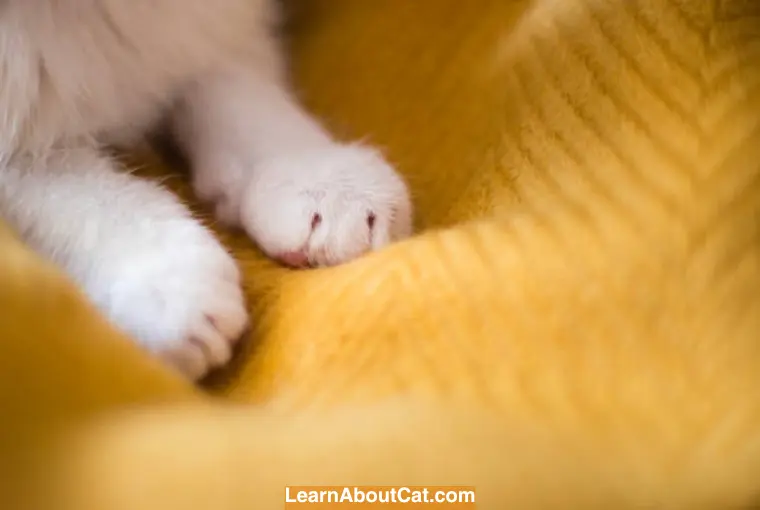
- Aggressive Kneading: If your cat is kneading too hard and aggressively, it could lead to scratches and bruises on your skin. This is especially concerning if you have thin or sensitive skin.
- Unwanted Kneading: If your cat is kneading in a place where you don’t want them to, such as on your face or neck, it could be uncomfortable or even dangerous.
- Scratching Furniture or Clothing: Some cats may knead on furniture or clothing, which can cause damage.
- Excessive kneading: In some cases, cats may knead excessively, to the point where it becomes disruptive or even harmful. If your cat is kneading excessively, try to determine the underlying cause, such as stress or anxiety, and work to address it through environmental enrichment or behavioural training.
What Should I Do if My Cat Kneads Too Hard?
Making biscuits or kneading is a very common and natural behaviour for cats, and your cat isn’t even aware that it’s hurting you. Since they are attempting to show you affection, it is never advisable to yell at them or try to stop them from kneading. Instead, try the suggestions given below.
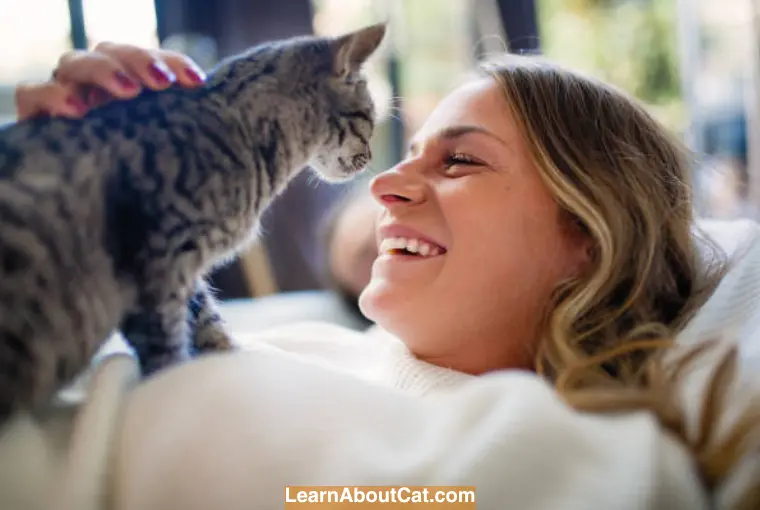
- Get a Blanket or a Pillow: The presence of a soft blanket or pillow next to you may also prevent uncomfortable biscuits from forming. Every time you feel claws on your arms or legs, bring the cushion or blanket closer.
- Move Aside: If she was sitting on your lap, you may gently shift her to the couch, the floor, or her bed. It is best not to shock the cat and not to let her know you are offended by her behaviour.
- Routinely Clipping Nails: All cat owners have experienced the piercing, searing pain of a cat scratch. So, keeping your cat’s nails trimmed can reduce the severity of the kneading and make it less painful for you.
- Use Nail Caps: Instead of trimming their cats’ claws, many cat owners choose to use nail caps. These coatings prevent your cat’s claws from growing sharp tips, making them dull instead.
- Stop Petting: You can resume petting your cat after she stops rubbing her nails along your skin. This will teach your cat the difference between proper and inappropriate behaviour.
- Training of Cat: If you want to teach your cat good behaviour, you’ll need to put aside some time for training. Giving your cat a pet or some food as a reward for excellent behaviour is the first stage in the process.
- Redirect Your Cat’s Attention: The second stage of training is behaviour redirection. Redirecting involves helping the cat move the kneading to a new spot. This might be the cushion or blanket I mentioned previously, or many cats also enjoy fleece fabrics.
Overall, while kneading behaviour is natural for cats, it should not cause significant pain or discomfort for their human companions. By using these techniques, you can manage any discomfort caused by your cat’s kneading behaviour and ensure a comfortable and enjoyable relationship with your feline friend.
When Your Cat Makes Biscuits What Things Should Be Avoided?
Even if your cat is harming you while making biscuits, there are several things you should never do to her. Declawing and punishment are two of them. Yelling and physical abuse of cats are discouraged by cat behaviourists because they are unethical and ineffective.
- Declawing: Declawing is a terrible practice that might harm your cat’s health in a variety of ways. So, it should be strictly prohibited.
- Punishment: There is no remedy for yelling, beating, or tossing your cat off your lap. Cats cannot be trained to behave by physical or verbal punishment. You won’t benefit from this, and the cat could go away if you do.
Why Do Sometimes Cats May Knead Excessively?
Excessive kneading in cats can have a variety of causes, including anxiety, stress, boredom, or illness. Cats may also knead excessively as a compulsive behaviour or due to a neurological disorder.
In some cases, excessive kneading can lead to injury or pain, particularly if the cat is kneading aggressively or on sensitive areas of the body.
If you notice that your cat is kneading excessively, it’s important to observe their behaviour and consider any underlying factors that may be contributing to the behaviour.
You can reduce stress and boredom by providing your cat with plenty of physical and mental stimulation, such as games, playtime, and interactive activities, which may also help reduce excessive kneading behaviour.
Why Does My Cat Knead and Purr on Me?
If your cat kneads and purrs on you, it is a sign that they enjoy your company and feel safe and loved in your presence.
The best way to show your cat you appreciate their affection is to pet them gently, talk to them in a soothing voice, and spend quality time with them. By doing this, you’ll strengthen your bond with your cat and create a stronger connection
Also Check Out: Do Cats Get More Affectionate With Age?
In How Many Ways Cats Show Affection to Their Owners?
The cat’s affectionate behaviour or ways towards its owners are shown below.
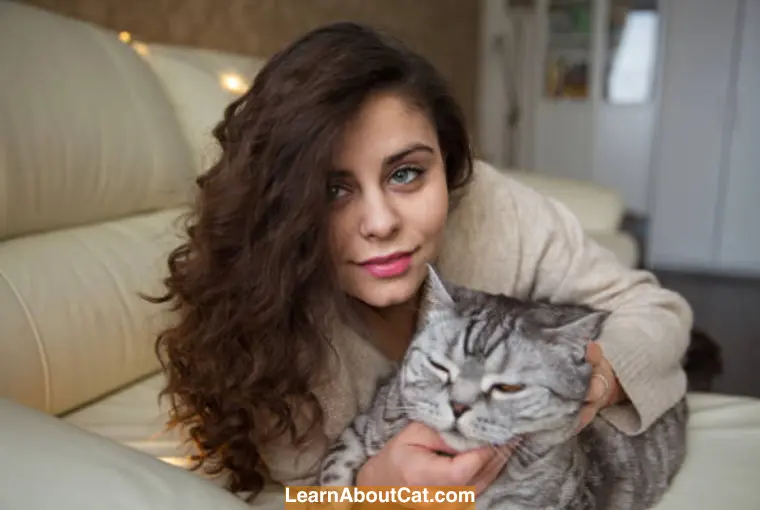
1. Purring
While your cat purrs, particularly when you are petting them, it is one of the clearest indications that they adore you. When your cat purrs and adopts a comfortable body posture, which is only one of the many noises cats use to communicate with people, they are telling you that they are happy and secure with you.
2. Slow Blinking or Cat Kisses
Cats do, however, employ nonverbal cues to demonstrate their love. Cats’ closed eyelids are an indication of perfect assurance. These deliberate blinks show that the animals are not afraid or in danger. You are letting them know that you are not a threat by quietly blinking back at them.
3. Exposing Their Belly
When your cat exhibits your belly, essentially giving you their life, there is no finer sign of love and trust. This exposed belly could be an expression of kindness, but it’s hardly an invitation.
4. Bringing You Gifts
Additionally, your cat could show its love for you by giving you presents. Cats hunt and consume meat naturally, thus they have a natural need to find prey and bring it back to their young.
Given that they don’t have any offspring to transport food to, female cats that have been spayed are more likely to bring back these types of gifts.
5. Rubs off on You
Your cat may be head-butting you, rubbing its face on yours, making a figure-eight with your legs, or wrapping its tail around your waist. Any of these are ways that your cat might show you that they care by leaving you with a scent that marks you as a close friend.
6. Grooming
Because they like maintaining their appearance; cats take a lot of time grooming themselves. Since grooming motion serves to regulate body temperature, promote circulation and for keeping themselves clean and healthy. E
xcessive grooming might be a sign that your feline buddy is stressed, has a skin issue, or has an injury.
7. Scratching
Another way cats show you their affection is the way they scratch, which is by far the most destructive of the lot sometimes. They are doing is methodically laying up visual and olfactory signals around their area.
Since you are your cat’s most essential component and some of the things cats value most are connected to you, your seat on the sofa or in your favourite chair is in jeopardy.
8. Kneading
When your cat rubs up against you, it shows that they are comfortable with you and gives them another chance to mark you with its smell by using the glands on the pads of its paws.
Frequently Asked Questions
Is kneading always a sign of affection?
No, while kneading is often a sign of affection, it can also be a behaviour that cats exhibit when they are feeling anxious or stressed or cat is in heat.
Can I train my cat to stop kneading?
While you can redirect your cat’s behaviour by providing them with an alternative object to knead on, such as a soft toy or cushion, it is generally not recommended to train your cat not to knead on you. Kneading is a natural behaviour that many cats exhibit as a sign of affection and relaxation.
Do all cats knead?
While kneading is a common behaviour among cats, not all cats knead. It can depend on their personality, upbringing, and individual preferences. Some cats may prefer other forms of affection, such as rubbing against their owners or sitting on their laps.
Is cat kneading similar to cat scratching?
Cat kneading and cat scratching are two separate behaviours, although cats may use their claws during kneading. Kneading is often associated with comfort and relaxation while scratching is a form of marking and defence.
Why do some cats knead while chewing on blankets?
Some cats may knead while chewing on blankets as a form of self-soothing or stress relief. Chewing on objects can provide cats with a calming sensation, and kneading can also help release tension and promote relaxation.
Additionally, some cats may enjoy the texture or taste of blankets or other fabrics, leading them to knead and chew on them.
Wrap up!
Cats are quite enigmatic creatures, therefore it is difficult to pinpoint why they like kneading so much. But each of the theories we outlined makes sense and might be a factor in the bustle of your cat’s cute paws. These fundamental premises are in their DNA. They carry out the behaviours they conduct as kittens to stimulate milk flow throughout their entire lives.
Cats may also need to show their love for you, make their bed for sleeping, or mark their territory. In addition, they could start acting sexually toward you or have other motives. Despite how lovely it is to watch, kneading could occasionally be painful. Make an effort to make the experience better for both you and your animal companion by using the suggestions I offered.
Who is Isabella?
My name is Isabella, and I am a dedicated and knowledgeable cat enthusiast. With years of experience caring for cats and a deep love for felines, I made a mission to help other cat lovers navigate the challenges of cat ownership.


